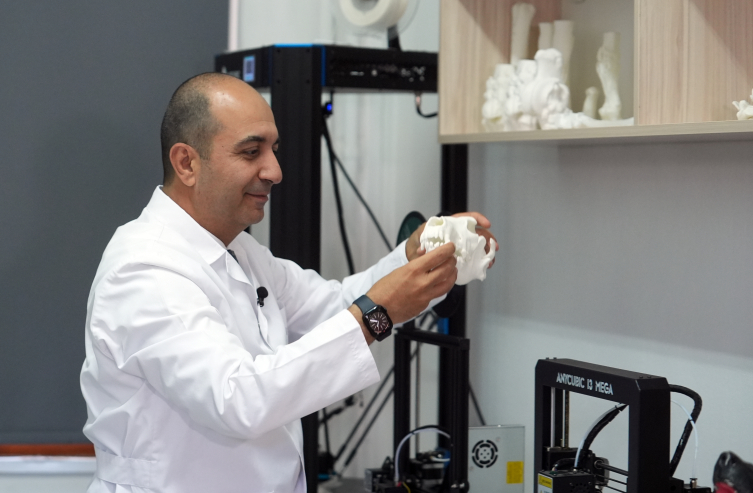Home Health: A Solution to Skyrocketing Healthcare Costs

As the 2024 presidential election draws nearer, nearly 75% of Americans report healthcare costs as a primary financial worry according to a new study from KFF. Americans have every reason to feel this way: over the last five decades per capita healthcare spending has increased from $353 in 1970 ($2,072 adjusted for inflation) to $13,493 today. But care quality has not increased by the same rate – rather, patients are simply paying more today for the same “one-size-fits-all” treatments.
Rising costs and poor quality, however, are not the result of this administration or that one. They are a function of deeper problems endemic to the American healthcare industry itself.
Added attention to the cost of care gives healthcare stakeholders the opportunity to step back and evaluate American healthcare as a whole. It is incumbent on us to think through system level changes and reshape the future of care delivery in this country.
Fortunately, home-based healthcare paradigms like hospice, that have long been recognized as the least institutionalized and profit-driven segments of the healthcare industry, offer a model for a return to healthcare sanity.
American healthcare is beset by skyrocketing costs that force many patients to choose between their health and their financial stability. The statistics are staggering: Healthcare is the primary reason that Americans file for bankruptcy. Over half of Americans––57%––report having had some medical debt over the last five years.
What’s more, the United States spends much more on healthcare per person than peer nations; some studies suggest we spend twice as much. As the most prosperous, innovative country on Earth, our healthcare system should be the best. Instead, it’s one of the worst amongst wealthy countries.
Numerous factors contribute to the escalating costs of traditional American healthcare systems. One leading cause is that many healthcare providers have gone all-in on physical infrastructure, building giant campuses that cost hundreds of millions of dollars to build and maintain, often relying on federal subsidies for construction and modernization.
But huge complexes are not the only option. In fact, the home and community based care model shows the way forward for a new kind of healthcare.
Patients often prefer to be treated at home rather than shuttling back and forth to hospitals, clinics, doctor’s offices and other care facilities. The comfort of the home environment alleviates anxiety and eliminates the stressful time spent in traffic, looking for parking and navigating unfamiliar medical settings. It allows patients to receive care in familiar surroundings with the support of their loved ones.
Rates of telehealth usage corroborate these preferences. Before the Covid-19 pandemic, most providers did not offer telehealth options, but once close physical proximity became hazardous, providers began to offer it. One study found that telehealth visits increased from 840,000 in 2019 to an astonishing 52.7 million in 2020. While numbers have fallen somewhat since their peak in 2020, rates of telehealth use now are exponentially higher than they were pre-pandemic.
Just as importantly, the at-home care model makes price easier to control by reducing expensive real estate and physical infrastructure costs. One study found that home-based programs effectively reduced complications while cutting the cost of care by 30%. Another found that mean cost of care was 38% lower, and that, compared with patients in traditional campus-based facilities, at-home patients spent a smaller proportion of the day sedentary and were readmitted less frequently.
Detractors point out that some complex procedures can only take place in a hospital environment, with expensive equipment and specialized medical staff, making it infeasible to treat certain conditions at home.
To this I heartily agree. Specialized campuses have their place in the healthcare ecosystem and play an indispensable role in the healthcare delivery process. They should not, however, aggregate all evaluation, treatment and checkup into a single location. A major procedure should take place at the hospital; many subsequent checkups need not. Yearly physicals, diagnostic tests like blood tests, routine vaccinations and counseling sessions require travel and waiting rooms, often needlessly. A great deal more healthcare can take place in the home, leaving valuable bandwidth available for specialized facilities when they are needed.
America’s campus-based system is overbuilt and over-complicated, creating misaligned incentives. Costs are spiraling out of control. The time for small tweaks has passed. It’s time to think big, cut to the root of the problem, and find solutions. But before we reinvent the wheel, let’s look to existing models like home and community based care to give us a blueprint.
Photo: SDI Productions, Getty Images
EN SON TV sitesinden daha fazla şey keşfedin
Son gönderilerin e-postanıza gönderilmesi için abone olun.

















